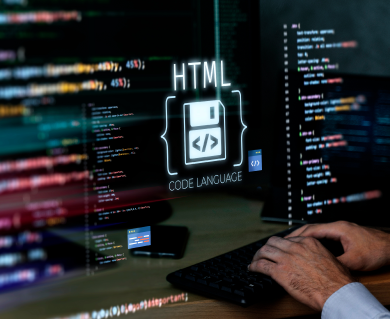New age software delivery platform for
an
ITes Giant

Company
ITES giant
Domain
Enterprise
Service
Design Thinking, UI/UX, E2E Product Development, Data Engg, Data Science
Technology
Invision, Microfrontend, Angular, HTML5, CSS3, TypeScript , Microservices, Node.js, Springboot Java, Hapi, PostgreSQL, Mongo ,Data Engg , Apache Spark, Hive, Airflow, Data Science , MLOps, DevOps ,SonarQube, Jenkins, Gitlab, Docker, Terraform , Infra - AWS Cloud
Platform
DSL, IO flow, aurOps
About the Customer
An ITES giant, delivering top-notch tech solutions to all their fortune 500 customers. It offers innovative and customer-centric information technology experiences. They aim to leverage sustainable businesses and create an equal world that is future ready. Thus, they are focused on leveraging next generation technologies like 5G, blockchain, metaverse, quantum computing, cybersecurity, artificial intelligence, and more, to enable end-to-end digital transformation for global customers. They have a workforce of more than 260000, with a global presence in more than 100 countries and across domains.
Business Need
Shifting to a product and engine mindset
Building scalable platforms that drive innovation, sustainable transformation, and business expansion.
Shift away from conventional processes and methodologies
That slowed down growth and efficiency by 37%
Reimagining business processes and restructuring operations
Adapting to changing market dynamics, adopting agile methodologies, and embracing customer-centric approach.

The traditional service delivery models that were available in the market had become stagnant and outdated. To tackle this and to stay ahead of the anticipated market trends, there was a pressing need for constant monitoring and agility to adapt to changing customer demands and industry dynamics.
The client’s needs revolved around breaking free from conventional service delivery models, embracing new age technologies like AI/ML, cloud computing, data analytics to enhance operational capabilities, improve service quality and optimize resource utilization. Moreover, they wanted to undergo significant transformation as an organization. These involve reimagining business processes, restructuring operations, and developing new service offerings. The goal of their problem statement was to adapt to changing market dynamics and to become a more agile and future resilient organization, adaptive to changes.
Challenges Faced
Productizing software deliveries
Building scalable and standardized solutions that can manage timely delivery while competing with agile-based service models.
Understanding the needs of the customer with the changing market dynamics
Building scalable and standardized solutions that can manage timely delivery while competing with agile-based service models.
Addressing Associates' Skilling Gap
Understanding industry needs and identifying skills required for new age technology and then retaining skilled associates accordingly.
Achieving required financial growth and exceeding competitors
Market positioning, revenue diversification, performance measurement and optimization, and customer retention and satisfaction
A unique solutioning approach to start with
In putting together, the proposed solution which was an end-to-end delivery engine we started with our PPT (People Process & Technology) framework. It provided a thorough roadmap that is ideal for the project’s requirements was built to take a holistic approach to solution development.
We approached the problem using design thinking and conducted thorough research to understand the pain points of the customer and further identify their user personas. Throughout the process we worked closely with their leaders to identify their stakeholders that consisted of:

Having identified these personas we observed that these requirements would result in multiple dependent services to emphasise the efficient utilisation of existing resources, components and code snippets. We identified 6 pods that could be reinstated to accelerate development cycles, by leveraging a repository of reusable modules and libraries, for reducing redundant work and creating innovative solutions.

These 6 pods that required reuse were
Design Thinking as a Service (DTaS)
DTaaS integrates design thinking principles and methodologies into the development process, empowering organizations to deeply understand user needs, identify pain points, and create solutions that deliver exceptional user experiences. It fosters collaboration, creativity, and empathy, encouraging cross-functional teams to work together, generate ideas, and iterate on designs. This also empowers organizations to approach development challenges with a human-centered, innovative, and iterative mindset, to drive customer satisfaction, and differentiate themselves in the market.
Microservices Enabled Portfolio as a Service (MePaaS)
Having identified these pods we understood that it would be best implemented using a microservices architecture to design and build applications. Also revolutionizing the way organizations handle their lineup of products and applications. Offering Microservices as a service helps break down complex. Monolithic applications into small groups. This in turn speeds up development and maintenance. with MePaaS, organizations have full agency over their portfolio, helping them to allocate resources, accordingly, helping organizations in adapting to market changes better and scale their applications with ease.
Resource Management Group (RMG)
Integrating an Agile Resource Management team responsible for overseeing resource allocation, optimizing workforce utilization. Offering a centralized platform for teams to collaborate in real-time, track progress of a said project, manage tasks and share resources. APW integrates project management tools, communication channels, version control systems, and document repositories, streamlining the entire project lifecycle. This helps siloed groups to come together and foster collaboration.
Upskilling as a Service (UaaS)
To allocate resources and workforce that is best suited for a project, we built a Normalized Associate Index that measures each employee’s competencies. Using their data, the solution could recommend the best possible role path for an employee along with the required skills and qualifications for different roles—keeping in mind the employee’s existing skills and the skills needed for the desired role
Digital Inside Continuous Service (DiCD)
Helps teams to leverage automation, version control, and continuous integration and deployment techniques to streamline development workflows and ensure consistent delivery of high-quality products and applications. Promoting real-time visibility into systems and help achieve agility and accelerated time-to-market.
Capability as a service (CaaS)
This flexible and scalable approach allows organizations to quickly scale up or down based on project requirements, eliminating the need for long-term resource commitments. CaaS integrates seamlessly with the engine's principles of massive reuse and collaboration, enabling organizations to tap into a global network of experts and leverage their collective intelligence to achieve superior delivery results.
Methodology
Agile
DevSecOps
Scrum
To reduce the operational overhead we used our Build, Operate and Transfer (BOT) model, where we handheld our client to form an extended technology arm. By adopting this framework, we helped organizations to offload certain technical responsibilities reducing the day-to-day burden of day-to-day operations. They leveraged our capabilities to optimize costs and focus on core business objectives. Thus, streamlining their operations, enhancing efficiency and future-proofing the solution.
Here is a run-down of all the modules that were included as a part of the solution
End Impact
100k associates using the platform as Core delivery engine
40% increase in Tech productivity & audited USD25+ million in savings through automated upskilling
20+ standardized tech pipelines boost organization-wide knowledge and module reusability.

Company
ITES giant
Domain
Enterprise
Service
Design Thinking, UI/UX, E2E Product Development, Data Engg, Data Science
Technology
Invision, Microfrontend, Angular, HTML5, CSS3, TypeScript , Microservices, Node.js, Springboot Java, Hapi, PostgreSQL, Mongo ,Data Engg , Apache Spark, Hive, Airflow, Data Science , MLOps, DevOps ,SonarQube, Jenkins, Gitlab, Docker, Terraform , Infra - AWS Cloud
Platform
DSL, IO flow, aurOps
Shifting to a product and engine mindset
Building scalable platforms that drive innovation, sustainable transformation, and business expansion.
Shift away from conventional processes and methodologies
That slowed down growth and efficiency by 37%
Reimagining business processes and restructuring operations
Adapting to changing market dynamics, adopting agile methodologies, and embracing customer-centric approach.

The traditional service delivery models that were available in the market had become stagnant and outdated. To tackle this and to stay ahead of the anticipated market trends, there was a pressing need for constant monitoring and agility to adapt to changing customer demands and industry dynamics.
The client’s needs revolved around breaking free from conventional service delivery models, embracing new age technologies like AI/ML, cloud computing, data analytics to enhance operational capabilities, improve service quality and optimize resource utilization. Moreover, they wanted to undergo significant transformation as an organization. These involve reimagining business processes, restructuring operations, and developing new service offerings. The goal of their problem statement was to adapt to changing market dynamics and to become a more agile and future resilient organization, adaptive to changes.
Productizing software deliveries
Building scalable and standardized solutions that can manage timely delivery while competing with agile-based service models.
Addressing Associates' Skilling Gap
Understanding industry needs and identifying skills required for new age technology and then retaining skilled associates accordingly.
Achieving required financial growth and exceeding competitors
Understanding industry needs and identifying skills required for new age technology and then retaining skilled associates accordingly.
Understanding the needs of the customer with the changing market dynamics
Building scalable and standardized solutions that can manage timely delivery while competing with agile-based service models.
In putting together, the proposed solution which was an end-to-end delivery engine we started with our PPT (People Process & Technology) framework. It provided a thorough roadmap that is ideal for the project’s requirements was built to take a holistic approach to solution development.
We approached the problem using design thinking and conducted thorough research to understand the pain points of the customer and further identify their user personas. Throughout the process we worked closely with their leaders to identify their stakeholders that consisted of:

Design Thinking as a Service (DTaS)
DTaaS integrates design thinking principles and methodologies into the development process, empowering organizations to deeply understand user needs, identify pain points, and create solutions that deliver exceptional user experiences. It fosters collaboration, creativity, and empathy, encouraging cross-functional teams to work together, generate ideas, and iterate on designs. This also empowers organizations to approach development challenges with a human-centered, innovative, and iterative mindset, to drive customer satisfaction, and differentiate themselves in the market.
Microservices Enabled Portfolio as a Service (MePaaS)
Having identified these pods we understood that it would be best implemented using a microservices architecture to design and build applications. Also revolutionizing the way organizations handle their lineup of products and applications. Offering Microservices as a service helps break down complex. Monolithic applications into small groups. This in turn speeds up development and maintenance. with MePaaS, organizations have full agency over their portfolio, helping them to allocate resources, accordingly, helping organizations in adapting to market changes better and scale their applications with ease.
Resource Management Group (RMG)
DTaaS integrates design thinking principles and methodologies into the development process, empowering organizations to deeply understand user needs, identify pain points, and create solutions that deliver exceptional user experiences. It fosters collaboration, creativity, and empathy, encouraging cross-functional teams to work together, generate ideas, and iterate on designs. This also empowers organizations to approach development challenges with a human-centered, innovative, and iterative mindset, to drive customer satisfaction, and differentiate themselves in the market.
Upskilling as a Service (UaaS)
To allocate resources and workforce that is best suited for a project, we built a Normalized Associate Index that measures each employee’s competencies. Using their data, the solution could recommend the best possible role path for an employee along with the required skills and qualifications for different roles—keeping in mind the employee’s existing skills and the skills needed for the desired role
Digital Inside Continuous Service (DiCD)
To allocate resources and workforce that is best suited for a project, we built a Normalized Associate Index that measures each employee’s competencies. Using their data, the solution could recommend the best possible role path for an employee along with the required skills and qualifications for different roles—keeping in mind the employee’s existing skills and the skills needed for the desired role
Capability as a service (CaaS)
This flexible and scalable approach allows organizations to quickly scale up or down based on project requirements, eliminating the need for long-term resource commitments. CaaS integrates seamlessly with the engine's principles of massive reuse and collaboration, enabling organizations to tap into a global network of experts and leverage their collective intelligence to achieve superior delivery results.